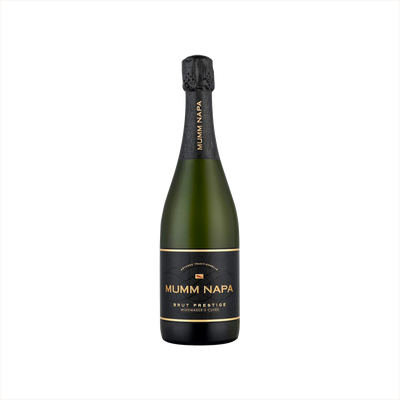Other Sparkling Wine
What is Other Sparkling Wine?
Other Sparkling Wine represents a catch-all category within the broader Sparkling Wine classification that includes any bubbly wine not specifically designated as Champagne, Cava, Prosecco, or other protected regional styles. This category encompasses sparkling wines made using various production methods—from the traditional méthode champenoise to tank fermentation—and can include everything from American sparkling wines to unique regional expressions from unexpected wine regions. What defines Other Sparkling Wine is essentially what it's not: it's the diverse collection of quality sparkling wines that don't carry the specific geographical or production designations of the more famous sparkling wine categories.
Learn More About Other Sparkling Wine
What makes Other Sparkling Wine unique?
Other Sparkling Wine represents the creative playground where winemakers break free from traditional regional rules and grape restrictions, crafting bubbly expressions that might blend unconventional varietals, employ alternative production methods, or come from emerging wine regions outside the established sparkling powerhouses. These wines often showcase experimental techniques like ancestral methods, unique grape combinations, or innovative aging processes that wouldn't qualify for protected designations like Champagne, Cava, or Prosecco. The category celebrates diversity and innovation, offering wine lovers the chance to discover surprising flavor profiles and production stories that push the boundaries of what sparkling wine can be.
How is Other Sparkling Wine made?
Other sparkling wines outside of Champagne use various methods to create those celebratory bubbles, with many producers employing the traditional method (méthode champenoise) where secondary fermentation happens right in the bottle. Some winemakers opt for the tank method (Charmat process), fermenting the wine under pressure in large stainless steel vessels before bottling, which tends to preserve brighter fruit flavors and costs less to produce. A few producers still use older techniques like bottle conditioning or even forced carbonation, though these methods typically yield different bubble qualities and flavor profiles than the more refined traditional approaches.
How do you drink Other Sparkling Wine?
Other sparkling wines are almost exclusively enjoyed neat in flutes or coupes, served well-chilled to preserve their effervescence and delicate flavors. While occasionally used as a base for light cocktails like mimosas, bellinis, or French 75s, these bubblies shine brightest when sipped solo to appreciate their unique terroir and winemaking style. Spring celebrations, summer garden parties, and special toasts throughout the year provide perfect occasions for popping open a bottle of Cava, Crémant, or Prosecco.
How do I choose a good Other Sparkling Wine?
Start by considering your intended use—lighter, fruitier sparklers like Prosecco or Cava work beautifully in cocktails where you want the bubbles without overpowering delicate ingredients, while drier options like Crémant or premium Cava hold their own when sipped neat. For cocktails, match the wine's intensity to your other ingredients: crisp, clean sparklers pair with citrus-forward drinks, while richer, yeastier styles complement herb-heavy or spirit-forward cocktails. Always taste before mixing if possible, since sparkling wines can vary dramatically in sweetness and acidity even within the same category.
Nutritional Information
Typical Calorie Range per Ounce: 20-25 calories
Typical Carbohydrate Range per Ounce: 1-3 grams
Typical Sugar Range per Ounce: 0.5-2.5 grams
Typically Gluten Free: Yes
Most sparkling wines made from grapes are naturally gluten-free since they're produced through fermentation of grape juice rather than grains. The sugar content varies significantly depending on the style - bone-dry sparkling wines contain minimal residual sugar, while sweeter styles like Moscato d'Asti or demi-sec Champagne will be on the higher end of these ranges. Always check the specific product label and manufacturer information to confirm gluten-free status, especially for flavored or specialty sparkling wines that may contain additives.
Scrolled this far? Your reward? Other Sparkling Wine Trivia!
- The ancient Romans accidentally created the first sparkling wines around 100 BCE when they stored their wines in cool caves during winter. The cold temperatures stopped fermentation mid-process, leaving residual sugars that would restart fermentation in spring, creating natural bubbles. They called these wines "vinum titillum" - literally "tickling wine" - because of the fizzy sensation on the tongue.
- Dom Pérignon didn't actually invent Champagne, but he did accidentally discover riddling (the process of rotating bottles to collect sediment) when an earthquake struck his cellar in 1693. The tremors caused his bottles to shift and rotate, and when he tasted the results months later, he found the clearest, most brilliant sparkling wine he'd ever produced. This seismic discovery became the foundation of modern Champagne production.
- The pressure inside a bottle of sparkling wine is roughly three times that of a car tire - about 90 pounds per square inch. This is why champagne bottles have that distinctive punt (the indented bottom) and thick glass walls. The punt isn't just for show; it distributes pressure and prevents the bottle from exploding. Early sparkling wine makers lost up to 90% of their bottles to spontaneous explosions.
- England produces sparkling wines that regularly beat French Champagne in blind tastings, thanks to identical soil composition. The same chalk hills that run through Champagne continue underwater across the English Channel and resurface in southern England. Some English sparkling wine producers use the exact same grape varieties and methods as Champagne houses, leading French producers to quietly invest in English vineyards.
- The term "sabrage" - opening champagne with a sword - originated during Napoleon's campaigns when his officers would celebrate victories by slicing off bottle necks with their sabers. The technique works because the bottle's weakest point is where the seam meets the collar. Today, you can saber any sparkling wine bottle, but the original sabers used were specifically cavalry swords with a particular blade angle that made clean cuts.
Higher-proof spirits can be intense. Mix carefully, taste thoughtfully, and enjoy responsibly.
Gift message (optional)

